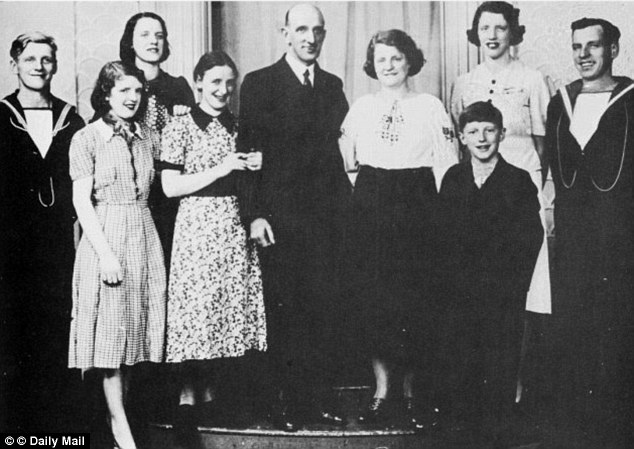Sex Crimes May Run in a Family's Male Genes: Brothers of Men Convicted of Offences Five Times More Likely to Commit Similar Crimes
By Jenny Hope
The findings show that 40 to 50 per cent of the differences in risk between close relatives of offenders and men from the general population were genetically driven. But the researchers stressed that this did not mean a man with a brother or father convicted of rape would inevitably follow in their footsteps. The news comes after the high profile case of Jimmy Savile, who it was revealed raped and sexually assaulted patients in 41 hospitals during a 24 year reign of abuse. It is now believed that his elder brother Johhny ‘most likely’ abused seven women at a South London hospital, according to an NHS report. Over the past few years a string of brothers have been convicted of child sex offences, including Mohammed Jumale and his brother Omar Jumale, who were part of a 13-strong gang that raped girls as young as 13-years old. Anjum Dogar, 31, and his brother Akhtar, 32 were jailed in 2013 for the abuse of six girls over the course of eight years in Oxford. Lead scientist Professor Niklas Langstrom, from the Karolinska Institute in Sweden, said: ‘It’s important to remember that it’s nothing mystic. ‘Of course you don’t inherit in some kind of automatised robotic way so that you will grow up to be a sexual offender.’
The scientists studied data on all men convicted of sexual offences in Sweden between 1973 and 2009. Rates of sexual offending there are similar to those in the UK. Of the 21,566 offenders, nearly half had convictions for adult rape or child molesting. Other crimes included possession of child pornography, indecent exposure and sexual harassment. In terms of absolute risk, being closely related to an offender only led to a small increase in the chances of committing a sexual crime. We are definitely not saying that we have found a gene for sexual offending.‘What we have found is high-quality evidence from a large population study that genetic factors have a substantial influence Professor Seena Faze Just 2.5 per cent of brothers of sex offenders were convicted of similar crimes, compared with 0.5 per cent of men in the general population, according to the study reported in the International Journal of Epidemiology. Evidence from half-brothers sharing either a mother or father and being raised in different family environments supported the idea that genetics played an important role in sexual offending. More than half of the difference in risk was linked to ‘non-shared’ environmental factors including perinatal complications, head injuries and childhood sexual victimisation that affect an individual but are not shared with other family members. Less than one per cent of convicted sex offenders are women so it was not ‘meaningful’ to include them, said Prof Langstrom. Behavioural factors found in sex crimes, such as impulsive behaviour, hypersexuality and sexual deviance, may be genetic-based drivers for the offences, said the researchers. Co-author Professor Seena Fazel, from Oxford University, said: ‘We are definitely not saying that we have found a gene for sexual offending. ‘What we have found is high-quality evidence from a large population study that genetic factors have a substantial influence.’
The findings may point the way towards providing better social help to at-risk families, many of which were already known to social services, said the authors. ‘At the moment genetic factors are typically ignored when it comes to making risk assessments of those at high risk of sexual offending’ said Prof Fazel. ‘Many of the families we are talking about may already be known to social services for other reasons, and if we can predict those at high risk of offending with greater accuracy then it may be possible to shape these interventions and target education and preventative therapies where they could do the most good’ he said. Interventions might include help with setting boundaries, and improving conflict resolving and social skills, he said. A logical next step would be a large-scale study that took DNA samples and looked for genetic patterns that may contribute to problem sexual behaviours, Prof Fazel added. But pinning down the precise genetic variants involved in sexual offending would be next to impossible, requiring samples from many thousands of individuals, which rules out the use of genetic screening.
|
.
Any original material on these pages is copyright © BishopAccountability.org 2004. Reproduce freely with attribution.










